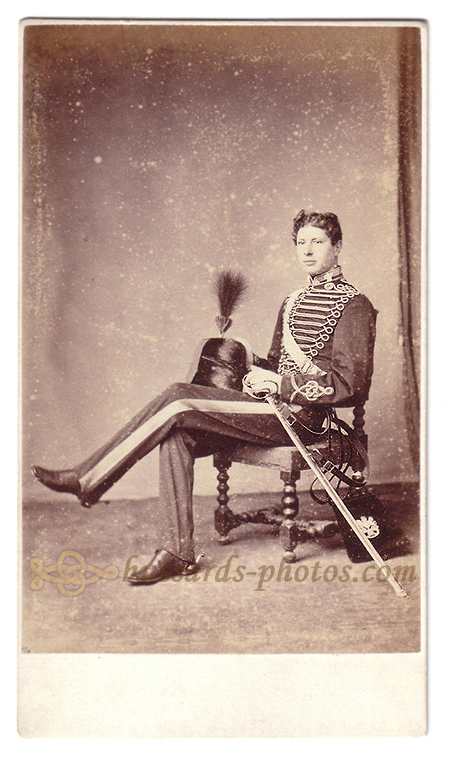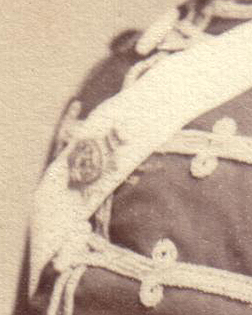|
CAPTAIN ADRIAN JONES
HORSES IN SCULPTURE
Captain Adrian Jones, the sculptor,
died in London yesterday at the age of 92. He had been ill for several
weeks with influenza and bronchitis.
His professionnal career might be summed up by saying that he designed
and executed the biggest piece of sculpture in London, the Peace
Quadriga on Decimus Burton's Arch, Constitution Hill, and that he lived
longer than any other sculptor of modern times. His own ideals in
sculpture are expressed in an article, "A Testament of
Beauty", which he contributed to The Times of April 10, 1935, on his
ninetieth birthday, when he received the gold medal of the Royal Society
of British Sculptors. Speaking of the principles he used in the
execution of his work he said :
The principles first of all say that nothing human or animal of God's
creation should be in any way distorted or made a laughing stock of.
Therefore the thing was to do an effigy in a simple pose which would
carry with it the appearance of the object, orsome other characteristics.
I don't want people to think (he added) that I suggest a facsimile of
any object that they are producing will represent the object they are
seeking. All live things look bigger than dead ones. Secondly, a
facsimile work of the model will never fill the eye or the sense of
proportion. It has to be increased in different places without
disturbing the anatomy to produce the effect of reality.
It will be seen that between "distorting" and "increasing"
there is room for many differences of opinion, and the plain truth is that
between them lies the art, as distinct from the craft, of sculpture. In
that art Jones was never very much at home, and his best works were in
the nature of facsimiles of the model, slightly amplified. When, as in
the Cavalry Memorial at Stanhope Geta, he allowed his imagination to
suggest "some other characteristics", the result is not so
happy.
Jones will be remembered chiefly for two things : his profound knowledge
of equine anatomy as affecting form in movement, and power of modelling
the same, and his extraordinary command of the mechanical and technical
side of his art. A point that is often forgotten is that even a bad
piece of large-scale sculpture needs a great deal of knowledge and skill,
not to speak of physical strength, to produce, and the Quadriga, though
it is rather ragged in silhouette, is far from being a bad piece of
sculpture. It owned its origin to a suggestion of King Edward VII as
Prince of Wales, and those who had an opportunity to see the castings as
Messrs. Burton's before they were assembled must always retain a
respectful opinion of the capacities required for such a piece of work.
Jones was born at Ludlow, Shropshire, on February 9, 1845, being the
fourth son of James Brookholding Jones, and educated at Ludlow Gramar
School. taking up the veterinary profession, he served for 23 years in
the Army- in the 3rd Hussars, Queen's Bays, and 2nd Life Guards- and saw
active service in Abyssinia (medal), Boer War, 1881, and Nile Expedition
(medal and clasp and Khedive's Star). On the advice of artistic friends
he turned to painting and sculpture, studying under G.B.Birch, A.R.A.
For a good many years he exhibited regularly at the Royal Academy, the
Grosvernor Gallery, the Royal Institute, and the Paris Salon. Apart from
the Quadriga and the Cavalry Memorial, he was responsible for the Royal
Marines' Monument, St. James's Park ; the Carabineers' Memorial,
Adelaide; and among his other more important works were "Duncan's
Horses"- his first success, exhibited in the Royal Academy of 1892,
and one of the few things to escape the fire at the Crystal Palace ; the
equestrian statue of the Duke of Cambridge, Whitehall ; "Persimmori"
at Sandringham ; and General Sir Redvers Buller, V.C., at Exeter. His
portrait of Lord Kitchener is at Ipswich, and he also painted an
equestrian portrait of Sir David Campbell, Governor of Malta, on his
Grand National winner, The Soarer and several works in pure landscape. He was made M.V.O. in 1907.
In 1934 Jones was given the diploma of honoray associate of the Royal
College of Veterinary Surgeons, and he was also an honorary member of
the Incorporated Association of Architects and Surveyors. Of military
and, in later life, rather rugged appearance, Jones was universally
popular, not to say beloved, in art circles in Chelsea,where he lived.
He was twice married : in 1870 to Miss E.E. Beckingham, and in 1891 to
Miss Emma Wedlake, and had one son. In 1933 Jones published his
reminiscences, which gave an interesting account of his military
experiences - in the Abyssinian War in particular, where he was one of
the first to enter the hut where King Theodore had shot himself with a
revolver given to him by Queen Victoria- and of his methodes of work,
but devoted far too much space to refuting a stupid accusation that he
was not the author of one of his works'. Similar accusations are not
uncommon in the history of sculpture- Rodin, for example, was accused
of exhibiting a cast from the living model-and nobody familiar with
sculptural methods, and the necessary delegation of labour in the
execution of large works, would think them worth more than a flat denial.
The funeral service will be at Chelsea Old Church on Friday at 11.30.
The cremation will be at Golders Green. |
| Adrian
Jones had been gazetted a Veterinary Surgeon in the Regiment of Royal
Artillery on January 11th, 1867.
On June 29th, 1869, the London Gazette
published :
3rd Hussars, Veterinary-Surgeon Alfred Adrian Jones, from the Royal
Artillery, to be Veterinary-Surgeon, vice Charles Felix Phillips,
deceased.
He resigned his Commission a year later, as told by the London Gazette
on August 26, 1870 (he will re-enter the service, his new appointment
bearing the date of June 10th, 1871).
It is to be noted that the Abyssinian Campaign
Medal was only instituted on March 1st, 1869, and effectively
distributed in the end of 1869 and early 1870. |




